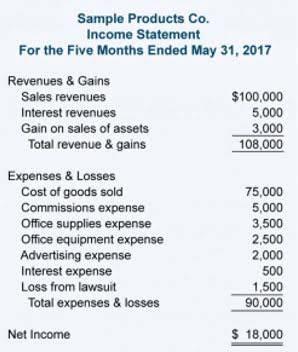
If you’re over that limit, complicated IRS rules determine whether your business income qualifies for a full or partial deduction. Here’s how the qualified business income deduction generally works. If your PTP is an SSTB, whether the PTP loss is a qualified loss is determined based on your taxable income in the year the loss or deduction is incurred. You must combine the QBI, W-2 wages, and Unadjusted Basis Immediately after Acquisition (UBIA) of qualified property for all aggregated trades or businesses, for purposes of applying the W-2 wages and UBIA of qualified property limits. However, these limits won’t apply until your income, before the QBI deduction, is more than the threshold.

Q17. Is there a form for reporting the qualified business income deduction? And if so, where can I find it?
Qualified items of income, gain deduction, and loss include such items that are effectively connected with the conduct of a U.S. trade or business and are included in determining the business’s taxable income for the tax year. QBI also includes real estate investment trusts (REITs), income from publicly traded partnerships (PTP income), and income from certain cooperatives. The qualified REIT/PTP component of the QBI deduction is not limited by a business owner’s W-2 wages and is equal to up to 20% of the qualified REIT and PTP income. Whatever your QBI deduction turns out to be, it can’t be more than 20% of your taxable income without the QBI deduction.
About Form 8995, Qualified Business Income Deduction Simplified Computation
- When a prior year suspended loss allowed under one Code section is subsequently limited by another Code section, this loss shouldn’t be included in the QBI calculation until the loss is allowed in the computation of taxable income.
- Alternatively, taxpayers may rely on the proposed rules for taxable years beginning on or before January 19, 2021, provided, in each case, taxpayers follow the proposed rules in their entirety and in a consistent manner.
- If your 2023 taxable income before the QBI deduction is less than or equal to $182,100 if single, head of household, qualifying surviving spouse, or are a trust or estate, or $364,200 if married filing jointly, your SSTB is treated as a qualified trade or business.
- If your income is within the phase-out range, you may be eligible for a smaller QBI deduction.
- ProSeries will also produce a QBI Component Worksheet where you can review your entries by activity, and a QBI Deduction Summary Worksheet showing the net amounts from all activities.
- The partner may also use the partnership’s W-2 wages and UBIA of qualified property in computing the deduction, if applicable.Note that the pass-through entity’s 2017 Schedule K-1 does not have the detail relating to the new QBID.
- This worksheet is designed for Tax Professionals to evaluate the type of legal entity a business should consider, including the application of the Qualified Business Income (QBI) deduction.
For 2024, the threshold increases to$383,900 for married couples filing jointly and $191,950 for all other filing statuses. If you are self-employed or own a small business and file Form 1040 (Individual Income Tax Return), you can claim the QBI deduction. To calculate and honor this deduction, you qbid tax must complete Form 8995 or Form 8995-A. Keeper is the top-rated all-in-one business expense tracker, tax filing service, and personal accountant. A specified service trade or business (SSTB) is any trade or business where the main asset is the skill or reputation of at least one employee or owner.
What is the Qualified Business Income (QBI) deduction?

Your business or trade may also be considered an SSTB if you trade or deal in certain assets or if the primary asset of your business is the reputation or skill of one or more employees. For example, if your business income is a result of endorsing products or services or using your image, likeness, or voice, you’re considered an SSTB, and your income isn’t eligible for the QBI deduction if it exceeds the threshold. Specified service trades or businesses (SSTBs) are only eligible for the QBI deduction if your income doesn’t exceed a certain threshold. You may also be within the phase-in range, which means you could still be eligible for the QBI deduction.
- Patrons that receive qualified payments from a Specified Cooperative are required to reduce their QBID as provided in section 199A(b)(7) (patron reduction).
- Amounts received as W-2 income, reasonable compensation from an S corporation, guaranteed payments from a partnership, and payments received by a partner for services under section 707(a) are not QBI to the recipient and are not eligible for the deduction.
- If the taxpayer is in the upper threshold, there is no Qualified Business Income Deduction deduction allowed for income from SSTBs.
- You just have to run the numbers to determine the qualified business income deduction.
- The QBI deduction also excludes income generated by foreign currency gains, commodities transactions, and certain dividends.
The field of law includes those legal and related services provided by “lawyers, paralegals, legal arbitrators, mediators, and similar professionals” (Prop. Regs. Sec. 1.199A-5(b)(2)(iii)). The field of accounting includes services provided by “accountants, enrolled agents, return preparers, financial auditors, and similar professionals” (Prop. Regs. Sec. 1.199A-5(b)(2)(iv)). The field of actuarial science includes all services performed by “actuaries and similar professionals” (Prop. Regs. Sec. 1.199A-5(b)(2)(v)). So if you earn $8,000 as an Uber or Lyft driver (after business expenses), you can deduct 20%, which is $1,600. So $6,400 is your taxable business income with the pass-through deduction. If your income exceeds the threshold, you are not automatically disqualified from taking the deduction; there are additional criteria the Internal Revenue Service sets to help determine whether the QBI deduction may qualify you for a partial deduction.
- When allocating prior year suspended losses allowed (column C) between Non-QBI (column F) and QBI (column J), the First-In-First-Out (FIFO) method must be used.
- The provision is a significant tax benefit for many noncorporate businesses and was passed in part on the premise that a sizable tax rate cut for C corporations — from a maximum graduated rate of 35% down to a flat 21% rate — justified a corollary tax benefit to non—C corporation businesses.
- QBI is used to determine the eligibility for the QBI deduction.
- For example, if you have a sole proprietorship for your freelance work and also receive qualified dividends from an REIT, you can deduct 20% from your freelance income and 20% from your REIT dividends.
- Additionally, note that W-2 wages and unadjusted basis immediately after acquisition do not carry over to future years; only the QBL carries over.
- For example, you buy office furniture, which has a 7-year recovery period for depreciation.
- C corporations are ineligible to take the QBI deduction because they are not pass-through entities.
But more specifically, it is the net amount of income, gain, deduction, and loss from your business. If you want to calculate your QBI deduction, you need to determine whether you’re below or above the income threshold for the QBI deduction phase-out. In 2024, the QBI deduction will be phased out if your income is between $191,951 to $241,950 for single filers and $383,901 to $483,900 for joint filers. The income limits for the QBI deduction have increased slightly for 2024. Single filers must make $191,950 or less, and joint filers must make $383,900 or less. If you’re at or below these thresholds, you may be eligible for the QBI deduction.
Instructions for Form 8995 – Notices

However, amounts not properly included in a return filed with the Social Security Administration on or before the 60th day after the due date (including extensions) for that return are not included (Sec. 199A(b)(4)(C)). A partner’s allocable share of W-2 wages is required to be determined in the same manner as the partner’s share of wage expenses. If the taxpayer is above the lower threshold, the taxpayer’s QBID for each entity begins to be limited. In this case the allowed QBID from each entity is limited by the amount of the entity’s W-2 wages or a combination of W-2 wages and unadjusted basis of assets. This includes business income from a sole proprietorship (reported on Schedule C of Form 1040), a partnership (reported on Form 1065), or an S Corporation (reported on Form 1120S).
Taxpayers whose taxable income exceeds the threshold amount of $157,500 ($315,000 in the case of a joint return) are subject to limitations based on the W-2 wages and the unadjusted basis in acquired qualified property. Form 8995 is the IRS tax form that owners of pass-through entities—sole proprietorships, partnerships, LLCs, or S corporations—use to take the qualified business income (QBI) deduction, also known as the pass-through or Section 199A deduction. By completing IRS tax Form 8995, eligible small business owners can claim https://www.bookstime.com/ the qualified business income deduction, or QBID, which permits pass-through business owners to deduct up to 20% of their share of qualified business income. After the deductible QBI amount is calculated for each of a taxpayer’s qualified businesses under the various taxpayer scenarios above, the deductible QBI amounts are combined to determine the taxpayer’s combined business amount. Therefore, if the taxpayer has only one qualified business, the combined QBI amount is the same as the deductible QBI amount for that business.
- If you don’t have an EIN, enter the owner’s name and tax identification number.
- First, a business of the taxpayer will not be treated as a qualified business, and the income of the business of the taxpayer will not be included in QBI, if the business meets the definition of a specified service trade or business (see below).
- Although estates and trusts may compute their own QBI deduction, to the extent section 199A items are allocable to the estate or trust, section 199A items allocated to beneficiaries aren’t includible in the estate’s or trust’s QBI deduction computation.
- The farmer may take any section 199A(g) deduction passed through to the extent of their taxable income determined after their QBID.
- However, as you’ll see, there are many limitations that may prevent you from taking a qualified business income deduction.